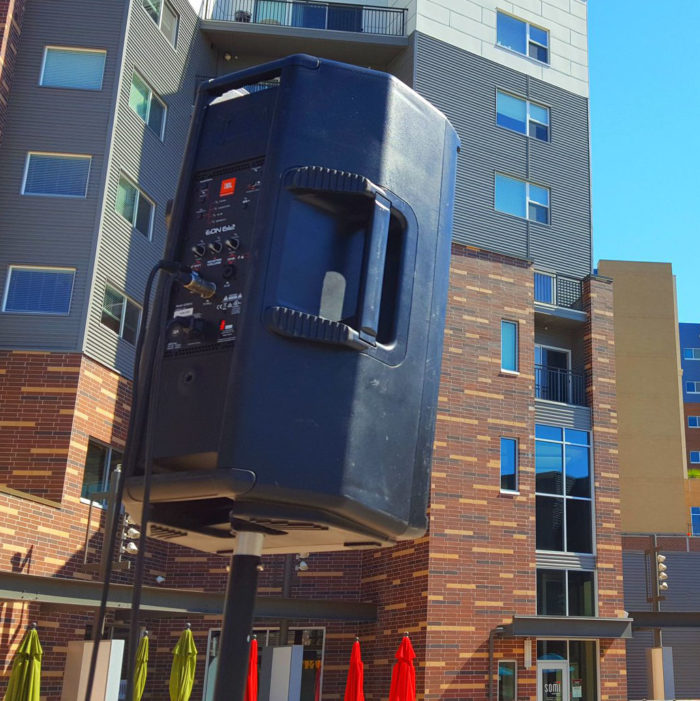I think this should probably work. Maybe.
Please Remember:
The opinions expressed are mine only. These opinions do not necessarily reflect anybody else’s opinions. I do not own, operate, manage, or represent any band, venue, or company that I talk about, unless explicitly noted.

 Want to use this image for something else? Great! Click it for the link to a high-res or resolution-independent version.
Want to use this image for something else? Great! Click it for the link to a high-res or resolution-independent version.Last year, I did a show at Gallivan Plaza that really ought to have had delays, but didn’t. As a result, the folks sitting on the upper tiers of lawn didn’t get quite as much volume as they would have liked. This year, I intend to try to fix that problem. Of course, deploying delays is NOT as simple as saying “we’ll just deploy delays.” There’s a bit of doing involved, and I figured I would set out my mental process here, before actually having a go.
Then, after all is said and done, we can review. Exciting, no?
So, here’s the idea:
A) Set primary FOH as a “double-hung” system. Cluster the subs down center, prep to put vocals through the inner pair of full-range boxes, and prep to send everything else to the outer pair. Drive the main PA with L/R output.
B) Have the FOH tent sit on the concrete pad about 60 feet from the stage.
C) At roughly an 80 foot distance, place the delays. The PA SPL in full-space at that point is expected to be down about 28 dB from the close-range (3 feet/ 1 meter) SPL.
D) Place a mic directly in front of one side of the main PA, and another mic in the center of the audience space, at the 80-foot line. (The propagation time to the delays will be slightly different depending on where people sit, so a center position should be a decent compromise.) Using both mics, record an impulse being reproduced only by the main PA. Analyze the recording to find the delay between the mics.
E) Send L/R to Matrix 1, assign Matrix 1 to an output, then apply the measured delay to that output. Connect the output to the delays. Also, consider blending the subwoofer feed into Matrix 1 if necessary.
F) Set an initial drive level to the delays so that their SPL level is +6 dB when compared to the output of the main PA. The added volume should help mask phase errors with the delays for listeners in front of the delay speakers, due to the contribution from the main PA being of much reduced significance…but it may also be possible that the added volume will be a problem for people sitting between the delays and the main PA. “Seasoning to taste” will be necessary. (For people sitting between the main PA and the delays, the time correction actually makes the delays seem to be MORE out of alignment than less, so the delays being more audible is a problem.)
So, there you go! I’ll let everybody know how this works. Or how it doesn’t.